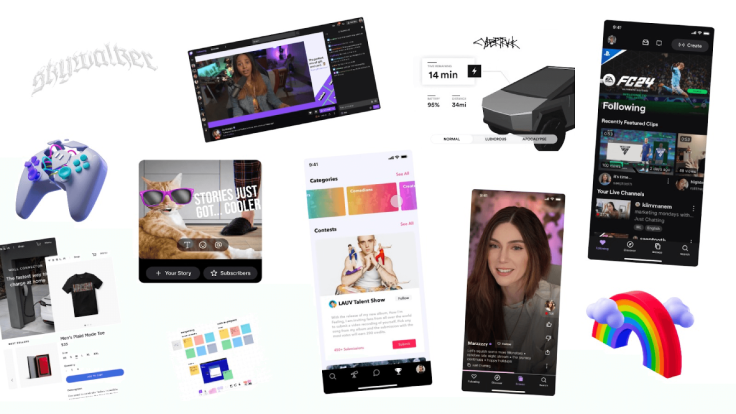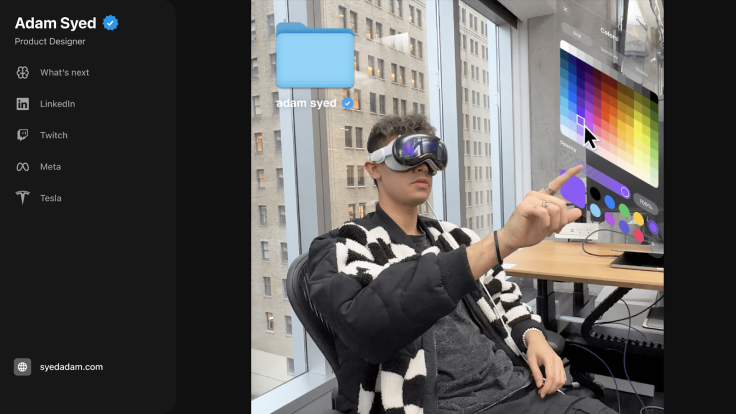Adam Syed: Transforming Twitch Ads for Modern Audiences
Syed uses AI to provide users with tailored insights, such as feed summaries, career suggestions, and job fit analyses

Streaming platform Twitch represents a significant opportunity for brands hoping to promote their products to a broad audience. Its 105 million monthly viewers make up a valuable market that cannot be ignored, especially since 65% cannot be reached through other social media platforms.
However, this audience is predominantly composed of very savvy consumers, many of them wise to the methods traditionally employed by advertisers. They dislike intrusive ads and will either find ways to block them or ignore them.
Innovative minds like Adam Syed, a product designer who has led the development of projects such as Twitch's Mobile Headliner ad, are solving this challenge. He plays a pivotal role in solving this puzzle, showing how thoughtful design can unlock significant revenue opportunities while still respecting the consumer.
Learn more about how Adam struck this delicate balance and the impact his contributions stand to have on the future of digital advertising.
From Swordplay to Digital Innovation
Adam Syed's professional history is unorthodox for someone who's led advertising strategy for one of the world's largest digital platforms. He started as a fencer, a national athlete representing his country at events like the Asian Games and Olympic qualifiers.
While this unusual background is not a history that lends itself naturally to design, it embodies his motto: 'Why conform to the norm when you have the potential to be something greater?' Furthermore, his time as a fencer has equipped him with the discipline and resilience that have propelled him so far in his career.
But it wasn't until he enrolled at the University of California, San Diego, that Adam developed an interest in user experience design and how it wove together principles of human psychology and technical innovation. After graduating with a BSc in cognitive science with a specialisation in design and interaction, he worked for global leaders like Tesla, where he reimagined the vehicle ordering experience, and Meta, where he worked on privacy initiatives that would improve data transparency for billions of users.
Eventually, he went on to work for Twitch (which was acquired by Amazon for $970 million), where he took the lead on projects like the Twitch Discovery Feed, Stories on Twitch Web, and Twitch's Mobile Headliner Ad. These ensured revenue growth without compromising user engagement. He also explored the potential of artificial intelligence to better engage communities on the platform.
Today, he works as a product designer for LinkedIn. He uses AI to provide users with tailored insights, such as feed summaries, career suggestions, and job fit analyses, helping them navigate their careers with clarity and precision.
Transforming Mobile Monetisation with the Twitch Headliner Ad

While working at Twitch, Adam played a crucial role in helping the streaming platform expand its ad capabilities on mobile devices.
Advertisers craved more meaningful placements, and mobile was a prime target, but Twitch's leadership was reluctant to risk compromising user satisfaction. The mobile interface was already limited in screen space, requiring an approach that wouldn't alienate viewers or detract from the live-streaming experience.
To this end, Adam conducted user research. He led conversations among product, engineering, and business teams to determine how to best capture a viewer's attention upon opening the app — and in a way that would be both profitable and minimally disruptive. He and his team refined the 16:9 Mobile Headliner Ad on Twitch's Following screen through prototypes and testing.
This format debuted alongside EA Sports FC 24 and proved to be a resounding success, generating millions of dollars in revenue.
But Adam notes that this wasn't just a technical achievement — foundational to the project's success was a paradigm shift in how Twitch showed ads. Rather than showing them indiscriminately, Adam prioritised viewer preferences and combined that insight with monetisation goals. This approach withstood scrutiny from Twitch executives and attracted the attention of Amazon, which integrated aspects of this format into its methodologies.
It's a powerful endorsement of Adam's overarching goal: maximising impact through design that respects and resonates with end users.
Adam's Impact on Twitch and Beyond

Twitch's most significant revenue stream is advertising, which makes Adam's work vital for the platform's continued growth. Furthermore, his work demonstrates that robust advertising solutions don't need to detract from the user experience—they can even enhance a platform's value if they feel organic to the community.
Now that Amazon has recognised the scalable potential of these high-visibility, user-first ads and has successfully adopted Adam's work to improve its advertising options, it's given significant credibility and support to this approach.
While at Twitch, Adam also experimented with interactive ads that could generate higher conversions between viewers and brands. Although they're still in development, these projects emphasise Adam's philosophy that an ad can (and should) be more than a static interruption; it can be a natural, interactive extension of any platform.
Outside of his work, Adam mentors aspiring designers worldwide, helping them hone their skills and ease into the industry. He's been featured as a guest speaker at universities like UC San Diego and a featured speaker and judge at various hackathons. In 2024, he was the keynote speaker at Design Buddies, a design conference attended by over a thousand industry professionals, where he discussed applying UX principles across blockchain, AI, and the creator economy. In 2025, Adam is scheduled to speak at none other than Harvard University.
Shaping the Next Era of Interactive Advertising
Adam Syed's work is a shining example of what he believes should be a crucial shift in digital advertising: blending revenue goals with authentic, human-centred experiences. Ideally, he believes, data-driven personalisation will evolve to go hand in hand with human values—an intersection of technology and empathy that enriches people's lives rather than just monetising them.
He believes that emerging technology plays a significant role in this: 'I envision AI-driven personalisation evolving to be even more dynamic and intuitive,' he notes. 'But the key is blending AI's analytical power with human-centred design to ensure these systems feel personal, not prescriptive.'
In practice, LinkedIn AI could offer proactive career advice based on emerging trends or craft a professional growth path tailored to your goals. 'Ultimately,' he says, 'I aim to design with empathy while harnessing AI's capabilities, ensuring technology supports users in ways that feel empowering and authentic.'
Through it all, it's clear that Adam's overarching mission remains consistent: Redefining how technology serves communities by blending cutting-edge innovation with human-centred design. In doing so, he's proving that it's possible to balance corporate goals with the trust and satisfaction of the people who make these platforms thrive.
© Copyright IBTimes 2025. All rights reserved.





















